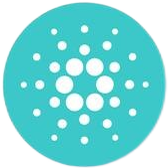
NATIX's Bold Move: Decentralizing Data to Shake Up Autonomous Driving!
Date: 2025-05-27 13:36:02 | By Mabel Fairchild
NATIX Network Unleashes StreetVision on Bittensor: A Game-Changer for Autonomous Driving
Hang onto your seats, folks! NATIX Network just dropped a bombshell by launching StreetVision on the Bittensor decentralized AI network. This ain't just another update; it's a giant leap towards revolutionizing mapping and autonomous driving with real-world data magic.
Get this: NATIX is tapping into the power of Solana's (SOL) decentralized physical infrastructure network, using smart cameras to scoop up heaps of street-level data. And they're not stopping there—they're mixing it with Bittensor's (TAO) scalable machine learning to create a powerhouse of innovation. It's the kind of move that's got everyone talking.
The brains behind this operation? Yuma, Bittensor's infrastructure partner, has been incubating this subnet. They're feeding it 360° video feeds from NATIX-enabled Tesla vehicles and other mobile devices. Then, they're turning that raw data into AI models that boost real-time map-making and vehicle autonomy. It's like watching the future unfold before our eyes!
And let's not forget, this isn't just about NATIX. The autonomous mobility industry is buzzing with similar moves. Big names like Uber are splashing cash on synthetic simulations and custom data collections. But let's be real, that's pricey and can't keep up with the ever-changing world. NATIX is here to shake things up.
They're not just dreaming big; they're aiming to rally a global community of over 250,000 drivers who've already logged a whopping 170 million kilometers using smartphones and VX360 devices. That's some serious mileage!
VX360 and Decentralized Data Training
Now, let's dive into the VX360, a game-changer developed with Grab. This bad boy uses Tesla's existing camera systems to capture 360° imagery without breaking the bank on new hardware. The data gets crunched both in the cloud and on edge smartphones, spotting traffic lights and signs in real-time. The heavy lifting? That's done off-device.
Thanks to Bittensor's decentralized framework, NATIX miners are cashing in on training and refining AI models on the subnet. These models then get deployed across the NATIX Edge Network. Talk about a win-win!
Alireza Ghods, NATIX's CEO and co-founder, spilled the beans: "By decentralizing data analysis, we're constantly upping our AI game, making maps more accurate, vehicles safer, and keeping everything in sync with the real world."
The subnet's first mission? Detecting roadwork in real-time, crucial for both mapping platforms and autonomous vehicle navigation. But that's just the beginning. NATIX is eyeing pothole detection and infrastructure analysis next, with plans to offer full scenario classification for autonomous vehicle training down the line.
Q&A with NATIX CEO Alireza Ghods
To get the lowdown on NATIX's latest bombshell, we had a chat with none other than Alireza Ghods, the mastermind behind it all. We dug into how they're scaling up data capture, why they think they can take on the tech giants, and how they're planning to make their token economy sizzle.
Here's the full scoop:
Reporter: Tech giants like Waymo, Tesla, and Mobileye have poured billions into collecting driving data and developing autonomous tech. How can NATIX possibly compete in terms of quality? Crowdsourced data might be scalable, but can it really match the precision of dedicated mapping vehicles?
Alireza Ghods: Collecting data for mapping and autonomous driving costs a fortune. The big players aren't sharing their data because it's their secret sauce. But none of them can match the scale we're hitting with our crowdsourced approach. Take the Learning to Drive (L2D) dataset, for example. It took three years and 60 EVs in German cities to log just 5k hours. We've already smashed 2k hours in the US in just 10 days since launching the VX360 on May 2nd, 2025, and that's with only a third of our pre-ordered devices!
Sure, our data might not be as pinpoint accurate as dedicated mapping vehicles, but the sheer volume we're collecting more than makes up for it. Look at Grab—they built their mapping solution on crowdsourced data, and it's more accurate than Google Maps in Southeast Asia. It's all about having a massive network, and with over 250K registered drivers, we're the biggest camera DePIN network out there.
Reporter: Collecting 360° video from thousands of cars and phones in real-time sounds like a tech nightmare. How's NATIX handling that?
AG: For the VX360 data, we're doing some heavy lifting in the cloud. Users only upload data when they're on Wi-Fi at home. But our smartphone network can handle some edge computing, detecting map elements like traffic signs and lights in real-time.
Reporter: How are you planning to scale up from a few hundred Teslas or phones to 100k+ devices without everything going haywire?
AG: The VX360 is a steal at $350, giving us access to 360° street-level imagery and utility for drivers. We're tapping into existing hardware—everyone's got a smartphone, and Teslas already come with 360° cameras. Building a new camera system would be 20-100x more expensive and not nearly as scalable.
We're also talking to partners who want to run fleets of VX360s. For example, we're in discussions with a Tesla fleet owner with over 3,000 vehicles. We're also building fleet management tools to boost our product's utility beyond just crypto rewards.
Reporter: Are these big players potential customers for NATIX's data, or are they competitors you need to outperform? And if it's the latter, where does your decentralized approach give you an edge?
AG: We've got Grab as a customer, and we're closing deals with some of the biggest names in autonomous driving. Every big player is a potential customer, even if they don't need our data today. Roads change, and their datasets will soon be outdated.
Most of these companies haven't spent big on data collection, so they'll need us. Others are relying on customer data, which they can't use to improve their models for everyone else. That's a huge bottleneck for them.
Reporter: Other projects like Hivemapper and DIMO have struggled with user uptake and token value. What's NATIX doing differently?
AG: Look at Geodnet—they're doing well. The key is focusing on protocol revenue and smart tokenomics, like buyback and burn. Many projects stumble because they don't have that. We're following Geodnet's strategy.
Each business model is unique. Hivemapper's dashcams are great for mapping, but our 360° data covers mapping, autonomous driving, and physical AI. It's worth way more and opens up tons of new use cases. Plus, with the buzz around Physical AI since NVIDIA's CES 2025 announcement, our data is a game-changer for training, testing, and validation at a fraction of the cost.
Reporter: What's the real utility of the $NATIX token beyond being a reward mechanism? Will data purchasers or AI developers need to use $NATIX or TAO tokens to access StreetVision's services?
AG: NATIX and StreetVision Subnet are two different ecosystems with different functions. NATIX focuses on data curation, while StreetVision is all about insights and AI model creation. Each generates its own value and has its own token accrual mechanism.
If you're interested in NATIX data, the value goes to the $NATIX token through protocol revenue and buyback and burn. If you're after the insights or AI models from StreetVision, the revenue goes to $dTAO, with some going to $NATIX since it's our data. Plus, $NATIX is used for protocol governance and securing the network through our staking platform.
Reporter: Your partnership with Yuma adds credibility but raises centralization concerns. DCG has invested in NATIX, and Yuma has been key in launching Bittensor subnets. How do you keep them from dominating Subnet 72's direction or rewards?
AG: Anyone can run a validator for our subnet. We're working with other major Bittensor validator players too. We've also removed staking or $dTAO holding requirements for miners to keep the ecosystem open. Miner centralization is a bigger worry than validator centralization because the network depends on them.
Reporter: What current use cases can you point to for the StreetVision Subnet? Is Grab already using NATIX's data to update their maps in Southeast Asia

Disclaimer
The information provided on HotFart is for general informational purposes only. All information on the site is provided in good faith, however we make no representation or warranty of any kind, express or implied, regarding the accuracy, adequacy, validity, reliability, availability or completeness of any information on the site.
 7
7  0
0  AI
AI BLOCKCHAIN
BLOCKCHAIN
Comments (0)
Please Log In to leave a comment.